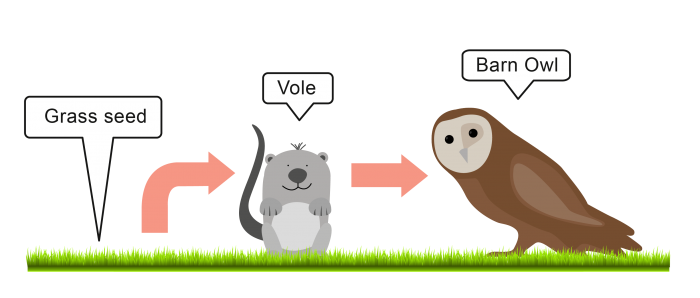Organisms contain a store of chemical energy. Animals eat plants or other animals in order to get this energy, whereas plants make their own food during photosynthesis.
Food chains (see diagram) are used to show what eats what, in a specific environment. The arrows show the direction in which energy travels. In the diagram, the vole eats the grass and is eaten by the owl. They point to the organisms that eat the ones before the arrow.

A lot of food chains together make up a food web (see diagram), as organisms do not only feed on only one thing.

Food chains (or webs) always start off with organisms that can make their own food, e.g. plants. These are called producers.
Animals are consumers because they have to eat other things. A food chain ends with a top predator. Predators hunt for food and they are carnivores, which means that they eat meat.
Animals that feed on plants only are called herbivores, whereas omnivores feed on both animals and plants.
Consumers can be primary (like the vole), secondary (like the owl), and even tertiary (like the organism that would eat the owl, even if it is not shown in this specific food chain).
Shall we have a go at some questions on food chains now?








